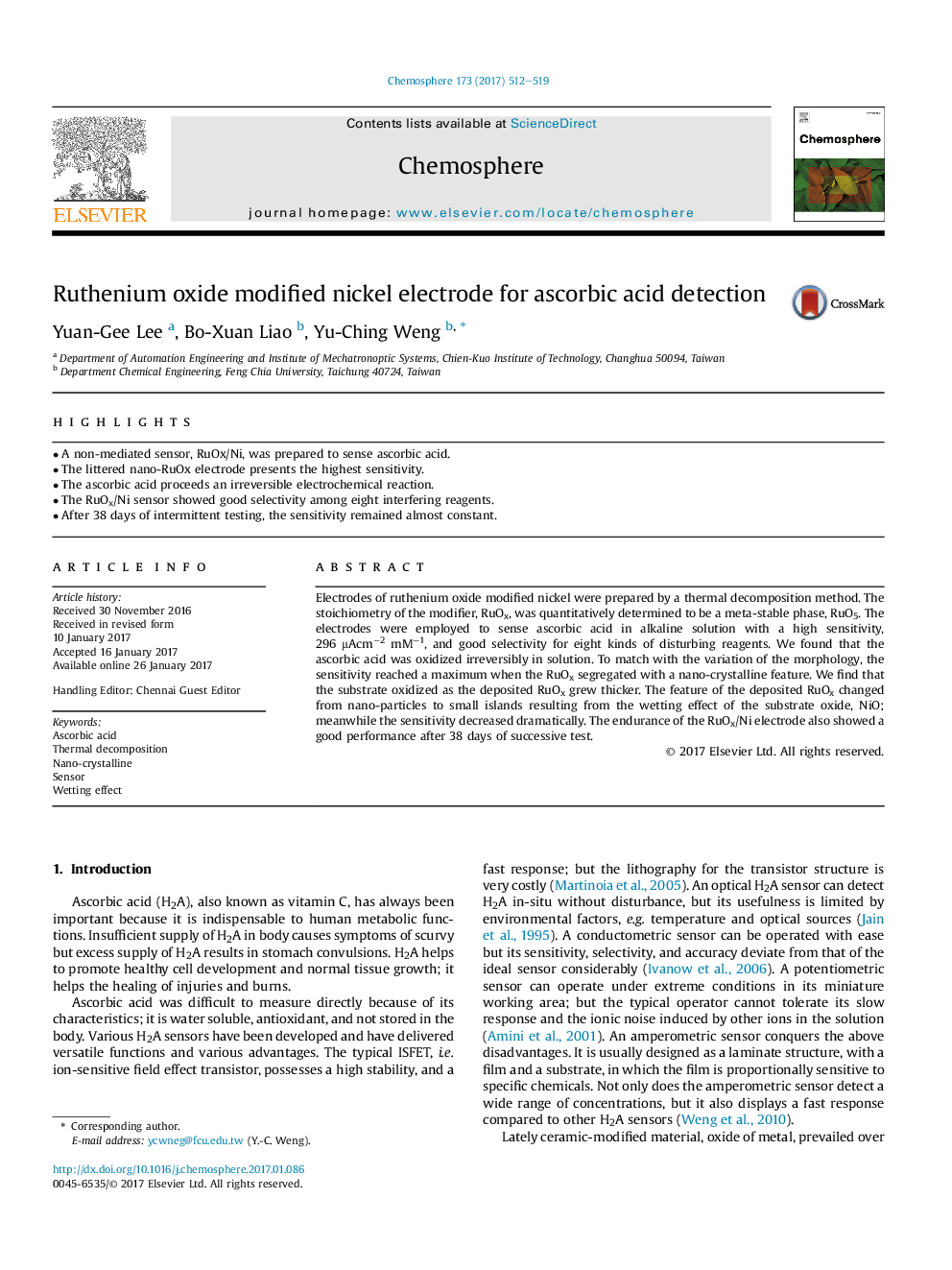| Article ID | Journal | Published Year | Pages | File Type |
|---|---|---|---|---|
| 5747438 | Chemosphere | 2017 | 8 Pages |
â¢A non-mediated sensor, RuOx/Ni, was prepared to sense ascorbic acid.â¢The littered nano-RuOx electrode presents the highest sensitivity.â¢The ascorbic acid proceeds an irreversible electrochemical reaction.â¢The RuOx/Ni sensor showed good selectivity among eight interfering reagents.â¢After 38 days of intermittent testing, the sensitivity remained almost constant.
Electrodes of ruthenium oxide modified nickel were prepared by a thermal decomposition method. The stoichiometry of the modifier, RuOx, was quantitatively determined to be a meta-stable phase, RuO5. The electrodes were employed to sense ascorbic acid in alkaline solution with a high sensitivity, 296 μAcmâ2 mMâ1, and good selectivity for eight kinds of disturbing reagents. We found that the ascorbic acid was oxidized irreversibly in solution. To match with the variation of the morphology, the sensitivity reached a maximum when the RuOx segregated with a nano-crystalline feature. We find that the substrate oxidized as the deposited RuOx grew thicker. The feature of the deposited RuOx changed from nano-particles to small islands resulting from the wetting effect of the substrate oxide, NiO; meanwhile the sensitivity decreased dramatically. The endurance of the RuOx/Ni electrode also showed a good performance after 38 days of successive test.
